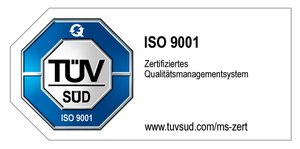In-situ inspection
In-situ inspection refers to the process of conducting computed tomography (CT) examinations during ongoing manufacturing processes or operational phases to monitor the quality and integrity of components in real-time and detect potential faults or deviations at an early stage. Unlike offline inspection, where components are examined separately outside the production process, in-situ inspection takes place directly within the manufacturing environment.
The use of CT in in-situ inspection offers several advantages. Firstly, it enables continuous monitoring of components, allowing for swift responses to any deviations and early detection of potential quality issues. Secondly, it provides the opportunity to adjust process parameters to improve the quality and consistency of manufactured components. Thirdly, it enables traceability and documentation of product quality, as CT data can be used for subsequent analysis and reporting.
In-situ inspection can be performed at various stages of manufacturing. For example, in casting processes, it can be employed to monitor the quality of the casting material, mold filling, and the distribution of inclusions or porosity. In additive manufacturing (3D printing), in-situ CT inspection can be used during the printing process to check the quality of the printed structures layer by layer, ensuring the absence of cracks or irregularities. In assembly and testing phases, in-situ inspection can be applied to verify the proper positioning of components, the presence of connections, or the absence of defects.
To conduct in-situ inspection, specially designed CT systems capable of withstanding the manufacturing environment are used. These systems are typically compact, robust, and enable rapid data acquisition and processing. They can be integrated into the production line to perform continuous or periodic CT inspections.
In-situ inspection requires close collaboration between engineers, quality controllers, and production operators. The CT data must be analyzed and interpreted in real-time to enable immediate decision-making and actions. This necessitates the development of algorithms and software tools for automated defect detection and quality assessment.
Overall, in-situ inspection using CT provides enhanced process control, early fault detection, and continuous monitoring of quality in manufacturing. Real-time monitoring allows for the identification and rectification of potential sources of errors before defective or non-compliant components are further processed or assembled, leading to a reduction in scrap, costs, and rework efforts.
In-situ CT inspection also offers opportunities for process optimization. By analyzing the CT data, patterns, trends, or correlations between process parameters and quality characteristics can be identified. This enables engineers to adjust and optimize process settings, further improving product quality and minimizing waste.
Another benefit of in-situ CT inspection is the ability to continuously monitor components throughout their entire lifespan. In safety-critical applications, regular in-situ CT inspection facilitates early detection of fatigue, wear, or degradation, allowing for timely maintenance or replacement actions to ensure the safety and reliability of the components.
It is important to note that the implementation of in-situ inspection with CT in manufacturing may present specific challenges. These include integrating CT systems into the production workflow, adapting software for real-time analysis of CT data, training personnel in CT technology handling, and ensuring data security and integrity.
Overall, in-situ inspection with CT enables continuous real-time monitoring and control of component quality during the manufacturing process. It improves product quality, enables process optimization, and contributes to the safety and reliability of the manufactured products.
We find the perfect solution for your project.
Contact us if you have questions to our services in the area of 3D metrology. We are looking forward supporting you in your success.



